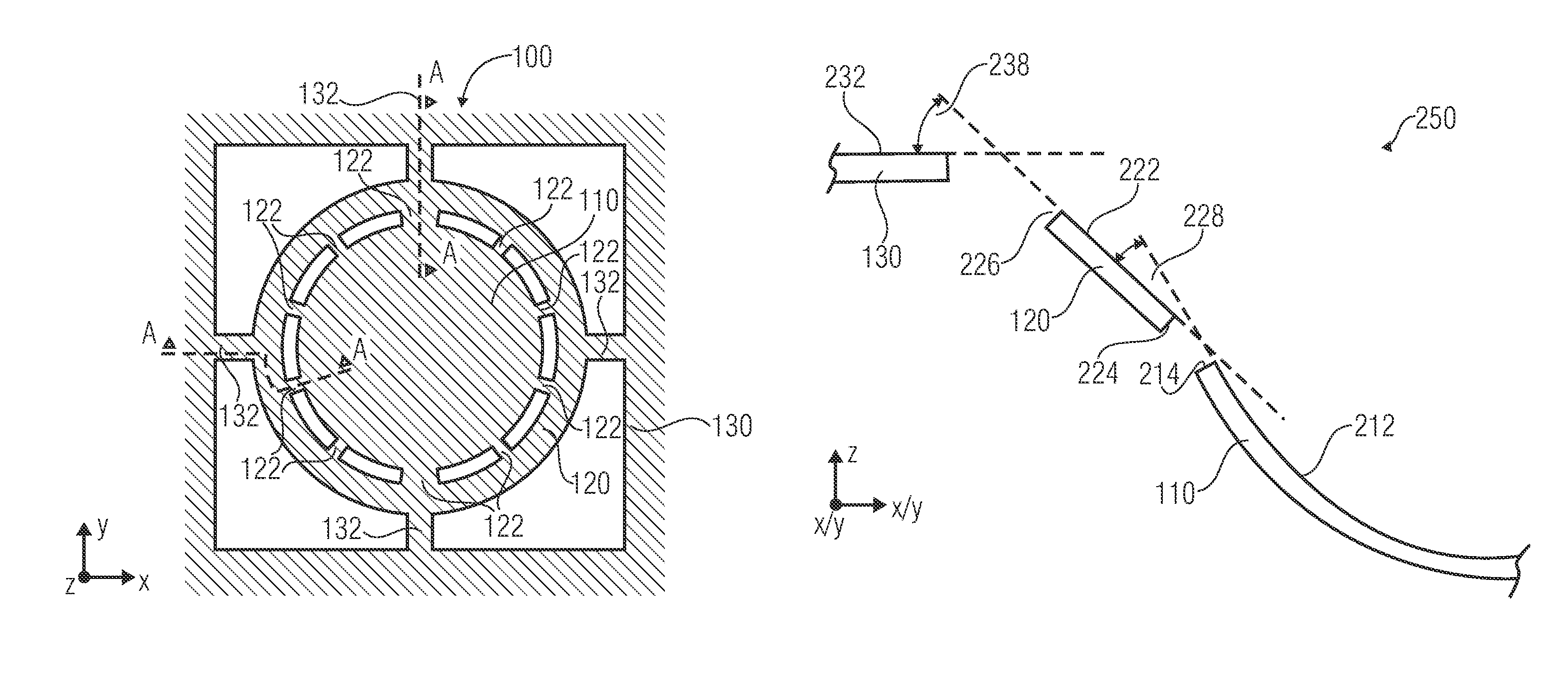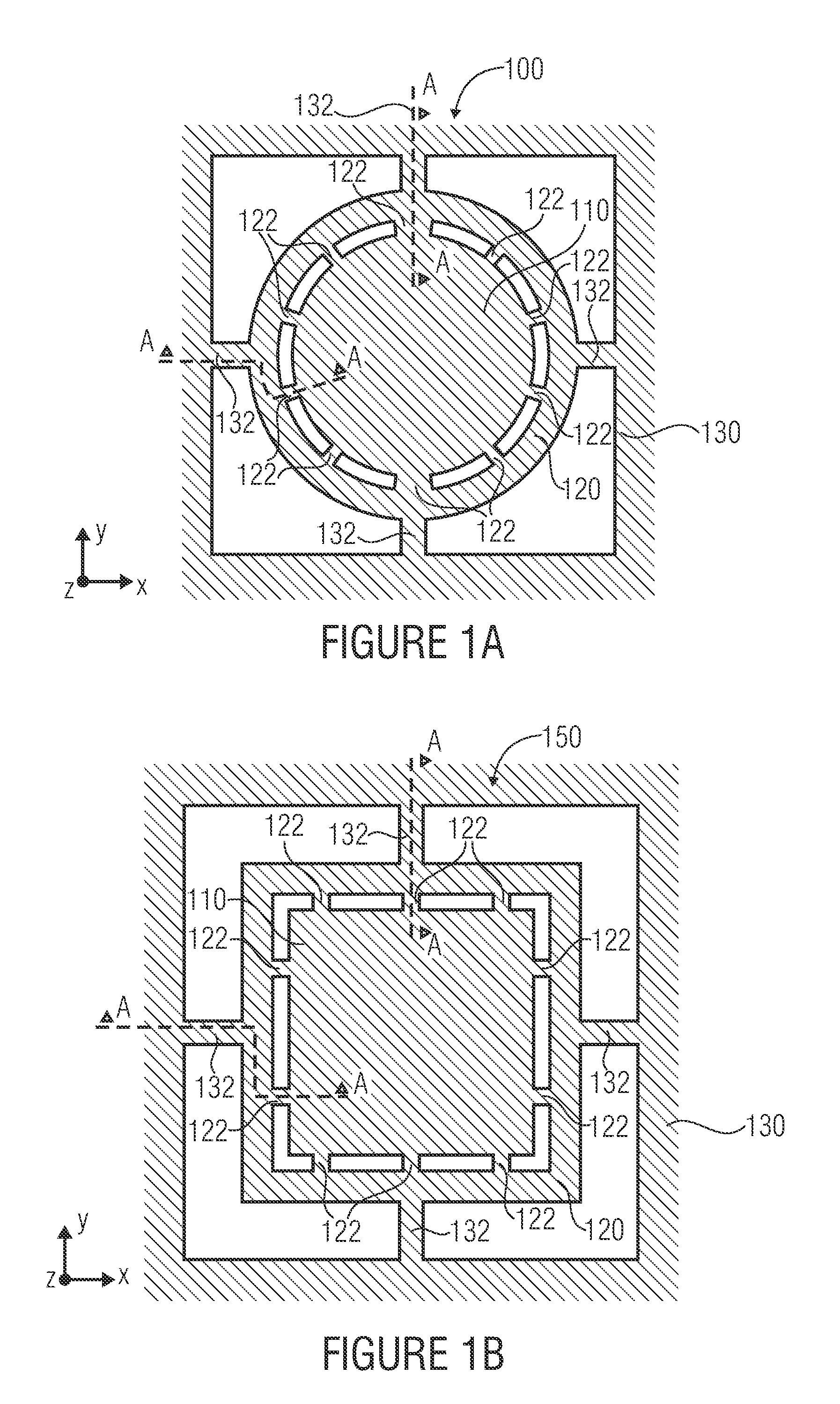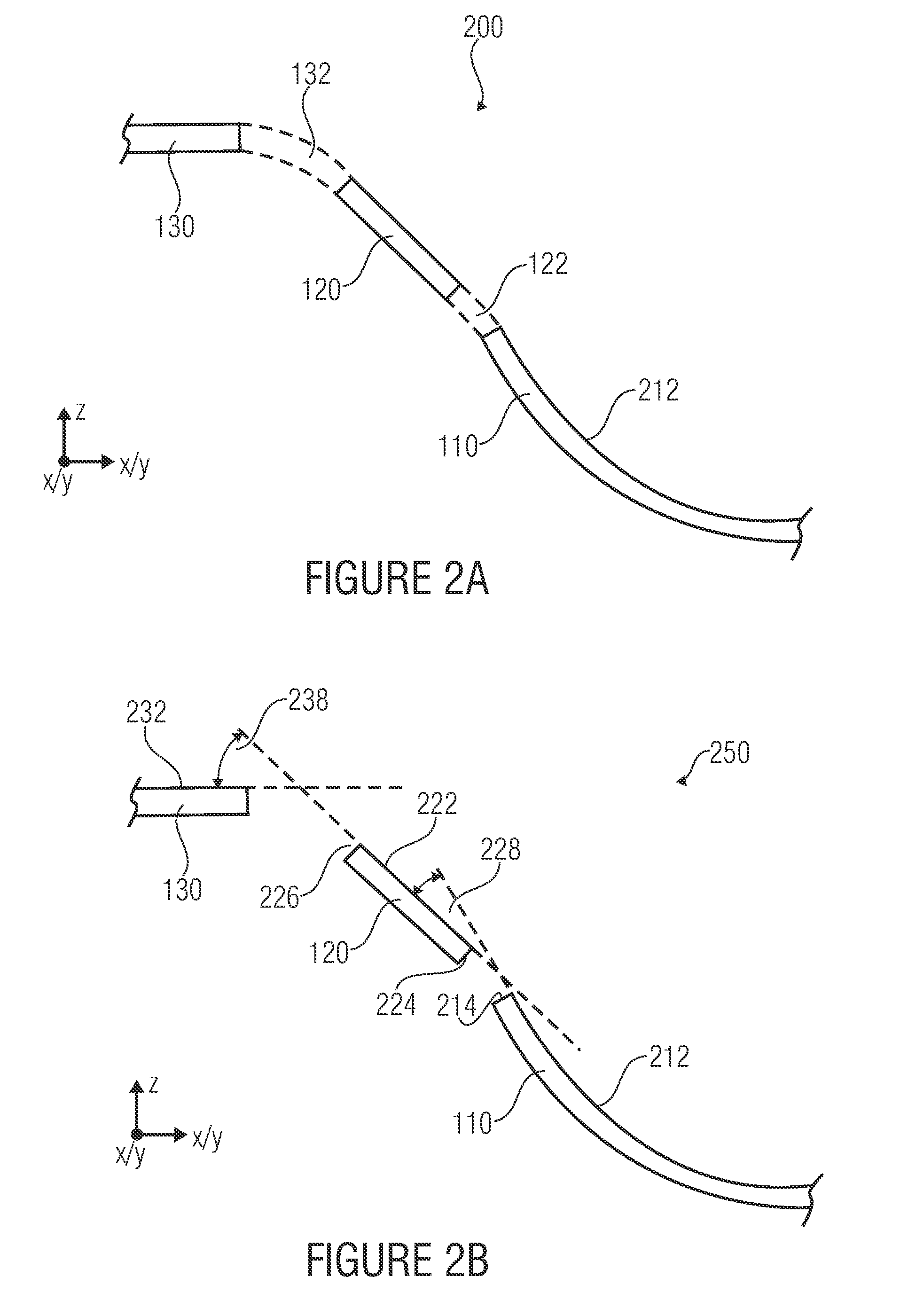Micromechanical element
a micromechanical element and functional element technology, applied in the field of micromechanical elements, can solve the problems of non-linear deformation errors in large deflections, significant decrease of the optical quality of the focusing mirror, and deformation errors, so as to achieve positive effect on the resistance against mechanical interference effects, significant reduction of deviation from the ideal deformation profile, and reduction of deformation errors
- Summary
- Abstract
- Description
- Claims
- Application Information
AI Technical Summary
Benefits of technology
Problems solved by technology
Method used
Image
Examples
embodiment 700
[0077]With the help of a described approach, the inventive embodiment 700 shown in FIG. 7 can successfully reduce the deviation from the ideal deformation profile resulting from the non-linear stress of the overall plate (plate-shaped micromechanical functional element). Separating the entire mirror plate into two partial plates 510, 520 has been realized by open trenches 722. Both partial plates are connected to one another by several connecting pieces 122. The number and position of these connecting pieces 122 can again be determined with the help of geometrical optimizations.
[0078]By the embodiment shown in FIG. 7, for example, a micromirror for active focus variation can be realized, with which a circular mirror plate is partitioned by a circular open trench 722 (with interruption by the connecting pieces 122) and two mirror plates 510 and 520 (first and second part of the plate-shaped micromechanical functional element).
embodiment 800
[0079]As already described above, a further reduction of the deviation of the surface profile can be enabled by partitioning into several mirror plates. This is shown exemplarily in the inventive embodiment 800 in FIG. 8. Here, the mirror plate has been partitioned into three partial plates 510, 520 and 830 with the help of open trenches 722. The sections of the mirror plate are again connected to one another by connecting pieces 122.
[0080]Theoretically, the optimum diameters of the partial plates should be as follows:
[0081]d1d=23andd2d=13
Since the partial plates are, however, non-ideally resiliently connected to one another via connecting pieces 110 and hence influence each other, the ratios d1 / d and d2 / d found by geometrical optimization deviate therefrom. The size of the partial plates and the amount and position of connecting pieces can again be found out by geometrical optimization.
[0082]The micromechanical element 800 enables also, for example, a realization of a micromirror...
PUM
 Login to View More
Login to View More Abstract
Description
Claims
Application Information
 Login to View More
Login to View More - R&D
- Intellectual Property
- Life Sciences
- Materials
- Tech Scout
- Unparalleled Data Quality
- Higher Quality Content
- 60% Fewer Hallucinations
Browse by: Latest US Patents, China's latest patents, Technical Efficacy Thesaurus, Application Domain, Technology Topic, Popular Technical Reports.
© 2025 PatSnap. All rights reserved.Legal|Privacy policy|Modern Slavery Act Transparency Statement|Sitemap|About US| Contact US: help@patsnap.com



